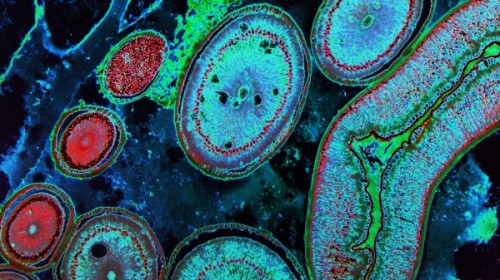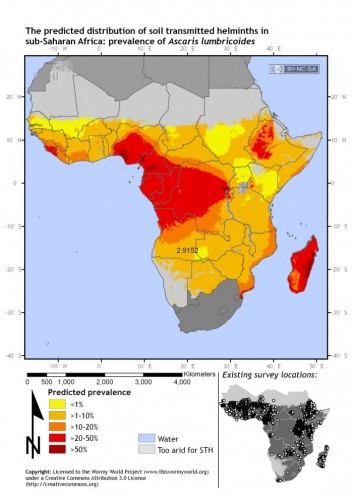
The iPhone can now be transformed into a microscope to detect hookworms. No, it is not a new app; all it takes is an $8 ball lens, an ordinary microscope slide, and some tape. While on a field study in Tanzania last fall, Isaac Bogoch, an infectious disease specialist at Toronto General Hospital, assembled the “iMicroscope” to detect giant roundworms and whipworms in nearly 200 children.
Without constant access to laboratory microscopes, Bogoch hypothesized that his iPhone could perform the same function for his work in developing countries. He taped an $8 ball lens onto the iPhone’s camera to assemble the “iMicroscope”, which could magnify stool samples on microscope slides by 50 times through the iPhone’s built-in camera application. Parasitic roundworms (helminth) and their eggs could be detected with 80 percent and 70 percent accuracy, respectively, using the makeshift tool — a rate that is not too far below that of laboratory microscopes (usually 87 percent). Bogoch and his colleagues plan to refine the design to consistently achieve 80 percent accuracy before adopting it into regular field operations.

The invention holds promise for nearly two billion people (24 percent of the world’s population) who suffer from infections by intestinal parasitic worms. It could be particularly helpful for fieldwork in countries in Sub-Saharan Africa like Tanzania, where nearly half of all children were infected by the parasite as recently as 2005. Helminth diseases, usually transmitted by eggs deposited within human stool in soil, are especially prevalent in developing regions where poor sanitation results in high soil-contamination. As Bogoch told the National Post last month, “the ultimate goal is ensuring that people have appropriate quality of care regardless of where they live and regardless of their socio-economic status.”
Advanced laboratory equipment is hardly affordable for wide circulation, but Chinese smartphones as cheap as $80 are accessible in African markets. According to Bogoch, any phone with a good camera and zooming function can be transformed into a microscope. Even those who can afford a diagnosis using advanced equipment could benefit from the iMicroscope’s instant detection capability. For patients who may have to wait for weeks to receive results from laboratories, a new generation of worms could mature to the adult stage in the meantime, whereas an instant detection menthod would enable anthelmintic drug treatments to be started immediately to kill or paralyze the worms.

Bogoch is the first to use an iPhone to detect intestinal parasites. But smartphones have been used as microscopes before, the first time in 2011 to detect blood diseases. Sebastian Wachsman-Hogiu, a UC Davis physicist, was able to detect both the low levels of blood cells in iron deficiency anemia, and the crescent-shaped blood cells of sickle-cell anemia. The iPhone camera’s semiconductor sensor, which is light-sensitive to 1.7 micrometers , could easily display red blood cells, which are 7 micrometers in diameter.
Though inventing the iMicroscope in its original improvised form did not require the work of Silicon Valley engineers, perhaps it will inspire technology producers to create an application that officially facilitates the use of smartphones as microscopes. In the near future, such technology could allow doctors to share blood samples, provide feedback in real-time, crosscheck new images with a database of previous diagnoses, and respond to infected patients with the confident assertion, “Yes! There’s an app for that!”
